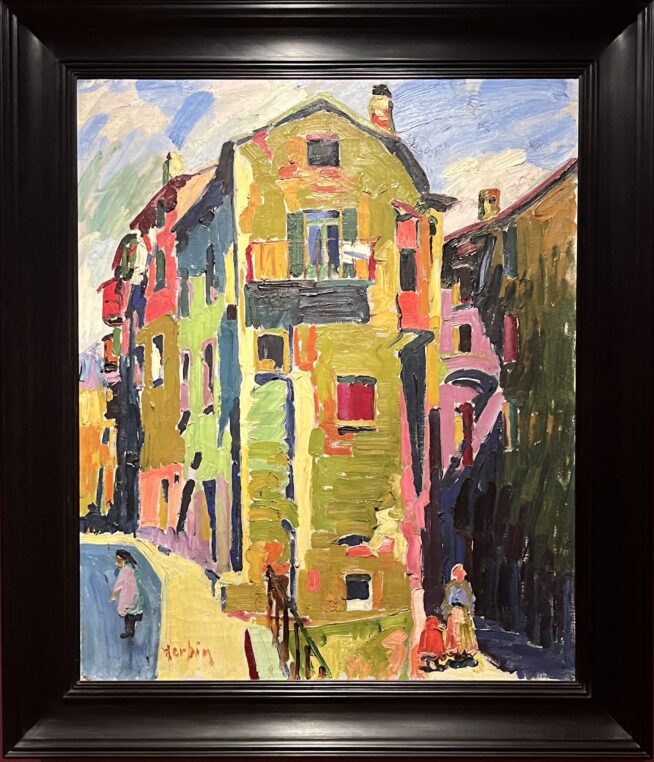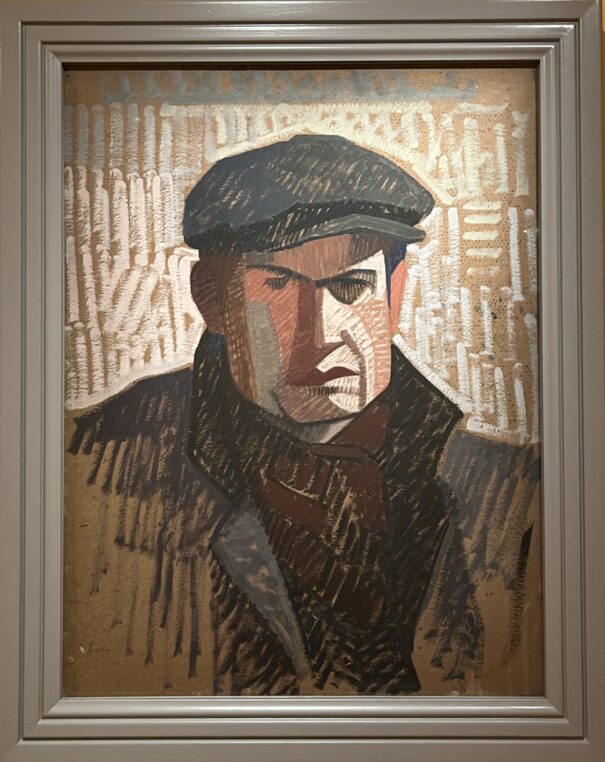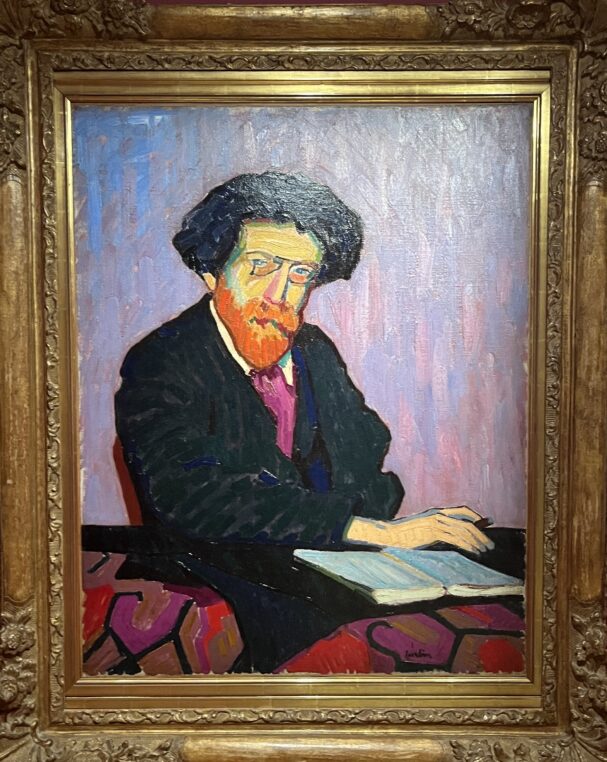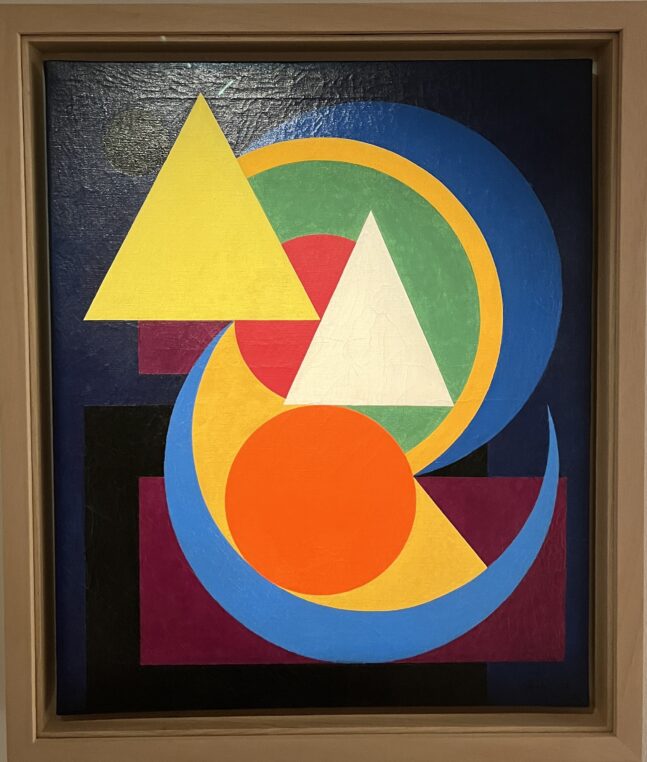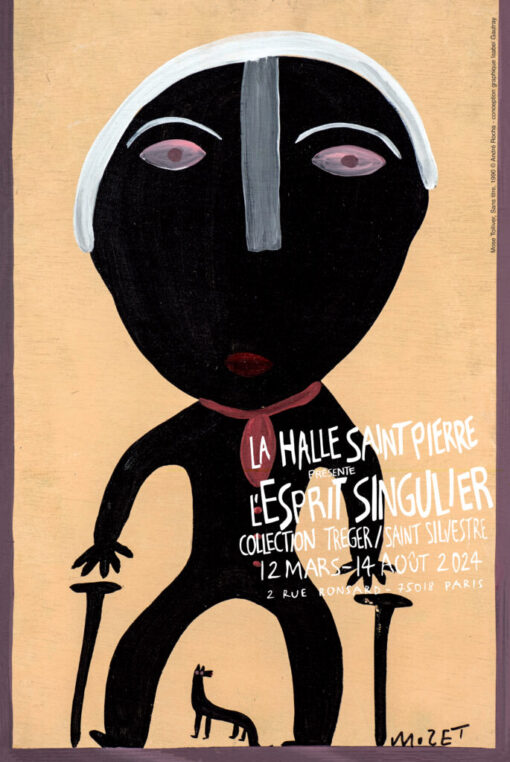Musée de Montmartre is a little jewel on top of the Butte near the Basilica but not as invaded. It has a tea room and a very pretty garden. And all the exhibitions there help rediscover forgotten artists, who worked at the Bateau Lavoir and at 12 rue Cortot where it is located. This time (and until September 15), Auguste Herbin (1882-1960), a Fauve painter turned cubist and abstract. Curated by Céline Berchiche, who wrote her thesis on him, and Mario Choueiry the successful Lebanese curator of the show on etienne Dinet at IMA. Referred to by Gilles Deleuze in a conference as “the artist who went the furthest in abstract painting with the color code he invented” Herbin was born near Cateau Cambrésis, Matisse’s birthplace, and at 16 he went to work in a newspaper, in Lille. His first painting dare influenced by the Flemish painters he saw in Bruges. In 1901, he moved to Paris where he is regularly exhibited in galleries and at the Salon des Indépendants in 1906.
He starts traveling to Corsica, Holland, Germany and Belgium et gets more successes when American critic Gelett Burgess singularizes him as the most “fauve” of all the famous painters of the time. One example is the portrait of Erich Mühsam, a German anarchist writer whom he meet s at le Lapin Agile. He will, later in 1922, denounce the rise of nazism and dies assassinated by the SS in Orianenburg in 1934. Herbin exhibits with other cubist painters (Braque, Gleizes and Metzinger) and moves into Picasso’s former studio in 1909 but always stands out as a lover of color. He spends some time in Céret “the Barbizon of cubism”, in 1913, near the Spanish border, and then joins the army as painter of camouflages.
In 1916, he signs with Leon Rosenberg and returns to Céret and becomes more abstract. Soon he will study the Bauhaus and Russian Constructivism. A 1921 fresco on mortar “Composition” is particularly interesting to see. It is part of his monumental pieces which are followed two years later by a return to “magical realism” with “Les Joueurs de boules”. This is followed by circular abstraction, and starts with Jean Hélion the association “Abstraction-Création” where color is more contrasted. Later in 1939, he creates an alphabet of colors.
Besides the exhibition you can visit the museum which tells the history of painting in Montmartre. It is delightful and if you go on a good day, you can linger in the garden. Until September 19, Musée de Montmartre.
Mario Choueyri’s next exhibition will be devoted to Jean Peyrissac.
And if you go down the Butte to Halle Saint Pierre and visit the Museum of Art Brut you will see the collection Treger Saint Sylvestre of sculptures and paintings until August 14 .
Share this Post
